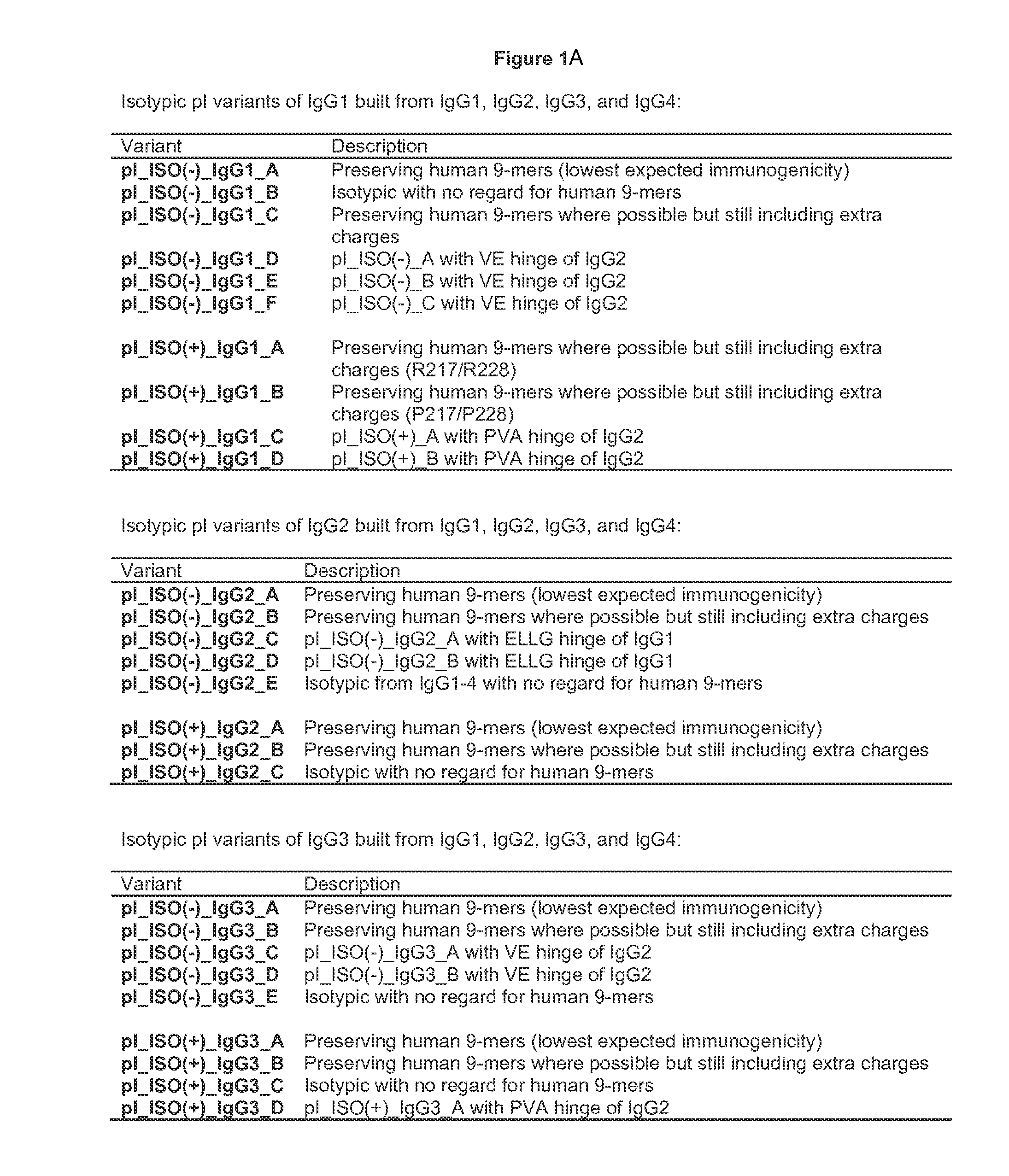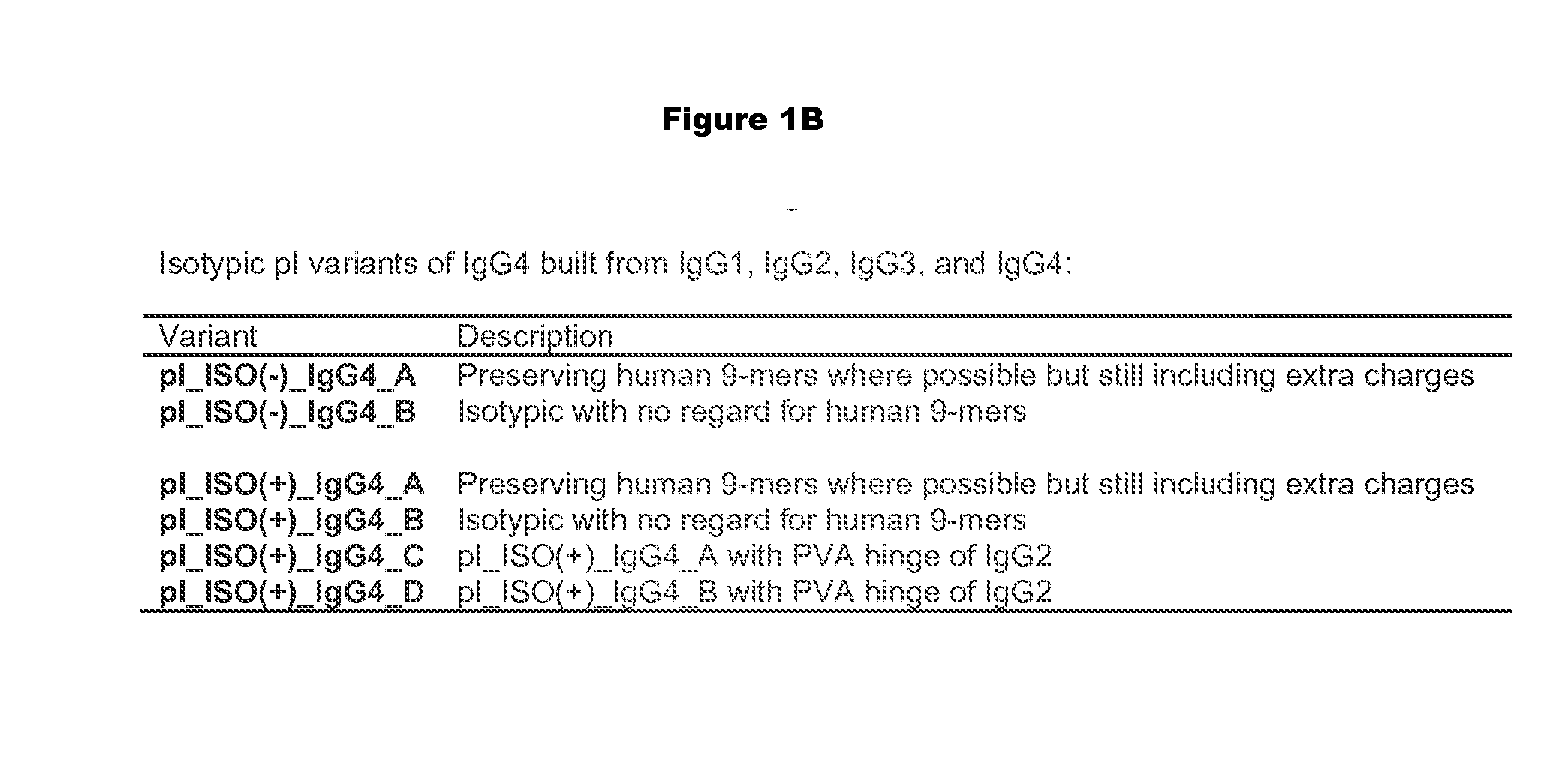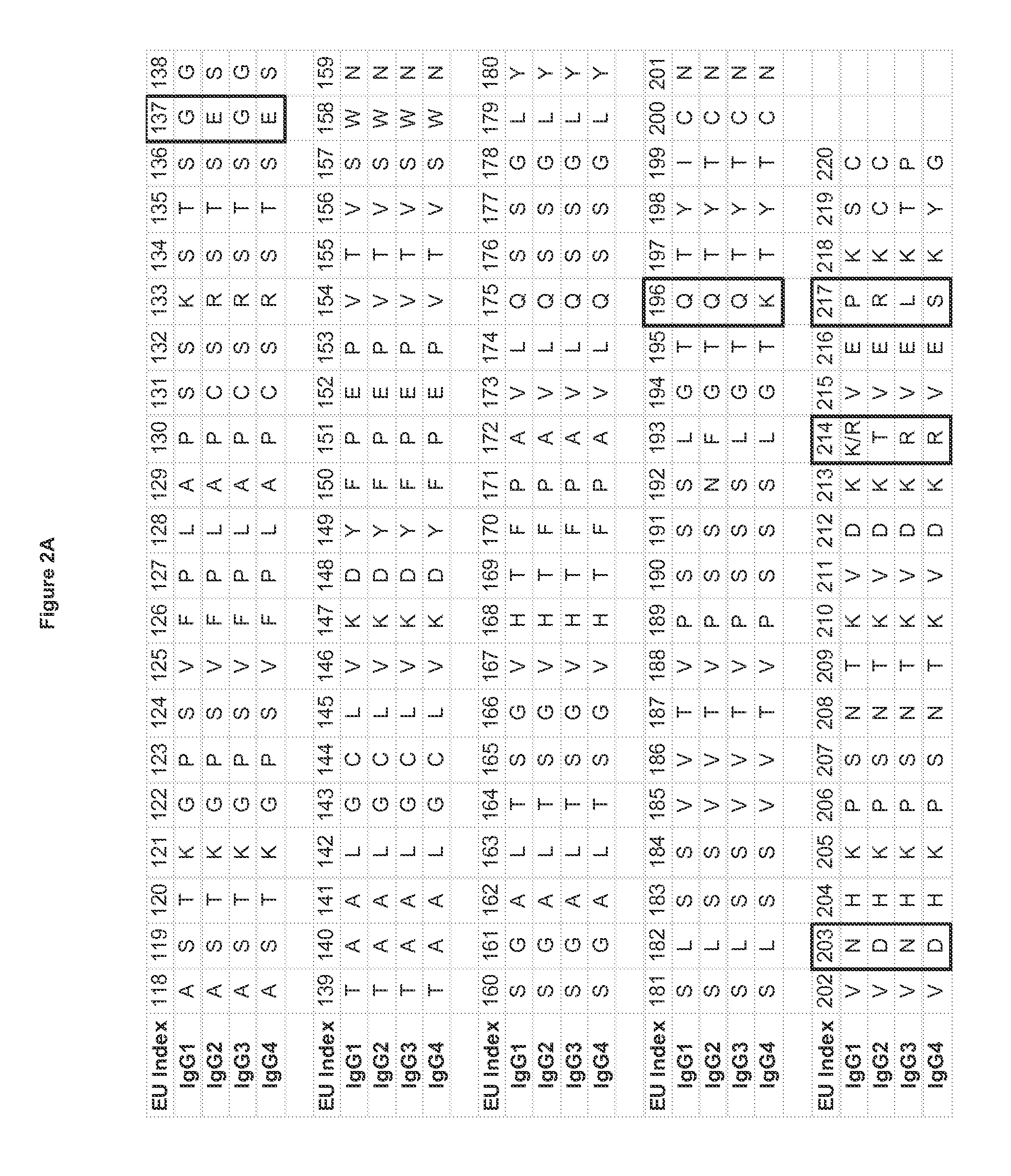Methods of purifying heterodimeric proteins using immunoglobulin class switching
a technology of immunoglobulin and heterodimer proteins, which is applied in the field of purifying heterodimer proteins using immunoglobulin class switching, can solve the problems of affecting the production and stability of antibody fragments, unable to have the constant region of the antibody with its associated functional properties, and the binding to the new antigen is always bivalent, so as to improve the binding affinity of fcr receptors, increase the binding affinity of fcriib and/or
- Summary
- Abstract
- Description
- Claims
- Application Information
AI Technical Summary
Benefits of technology
Problems solved by technology
Method used
Image
Examples
example 1
Construction, Expression, and Purification of Engineered pI Variants
[0337]Calculation of protein pI was performed as follows. First, a count was taken of the number of D, E, C, H, K, R, and Y amino acids as well as the number of N- and C-termini present in the protein. Then, the pI was calculated by identifying the pH for which the protein has an overall charge of zero. This was done by calculating the net charge of the protein at a number of test pH values. Test pH values were set in an iterative manner, stepping up from a low pH of 0 to a high pH of 14 by increments of 0.001 until the charge of the protein reached or surpassed zero. Net charge of a protein at a given pH was calculated by the following formula:
qprotein(pH)=∑i=H,K,R,NterminiNi1+10pH-pKi-∑i=D,E,C,Y,CterminiNi1+10pKi-pH
where qprotein (pH) is the net charge on the protein at the given pH, is the number of amino acid i (or N- or C-termini) present in the protein, and is the pK of amino acid i (or N- or C-termini).
[0338]...
example 2
Engineering Approaches to Constant Region pI Engineering
[0341]Altering the pI of a protein or antibody can be carried out using a variety of approaches. At the most basic level, residues with high pKa's (lysine, arginine, and to some extent histidine) are replaced with neutral or negative residues, and / or neutral residues are replaced with low pKa residues (aspartic acid and glutamic acid). The particular replacements may depend on a variety of factors, including location in the structure, role in function, and immunogenicity.
[0342]Because immunogenicity is a concern, efforts can be made to minimize the risk that a substitution that alters the pI will elicit immunogenicity. One way to minimize risk is to minimize the mutational load of the variants, i.e. to change the pI with the fewest number of mutations. Charge swapping mutations, where a K, R, or H is replaced with a D or E, have the greatest impact on reducing pI, and so these substitutions are preferred. Another approach to mi...
example 3
Purifying Mixtures of Antibody Variants with Modified Isoelectric Points
[0349]Substitutions that modify the antibody isoelectric point may be introduced into one or more chains of an antibody variant to facilitate analysis and purification. This is especially useful when a preparation of antibody contains a mixture of very similar species as in the case of heterodimeric and / or bispecific constructs that produce a mixture of hetero- and homodimers. For instance, heterodimeric antibodies such as those disclosed in US2011 / 0054151A1 or disclosed above can be purified by modifying the isoelectric point of one chain, so that the multiple species present after expression and Protein A purification can be purified by methods that separate proteins based on differences in charge, such as ion exchange chromatography.
PUM
| Property | Measurement | Unit |
|---|---|---|
| molecular weight | aaaaa | aaaaa |
| molecular weight | aaaaa | aaaaa |
| pH | aaaaa | aaaaa |
Abstract
Description
Claims
Application Information
 Login to View More
Login to View More - R&D
- Intellectual Property
- Life Sciences
- Materials
- Tech Scout
- Unparalleled Data Quality
- Higher Quality Content
- 60% Fewer Hallucinations
Browse by: Latest US Patents, China's latest patents, Technical Efficacy Thesaurus, Application Domain, Technology Topic, Popular Technical Reports.
© 2025 PatSnap. All rights reserved.Legal|Privacy policy|Modern Slavery Act Transparency Statement|Sitemap|About US| Contact US: help@patsnap.com



